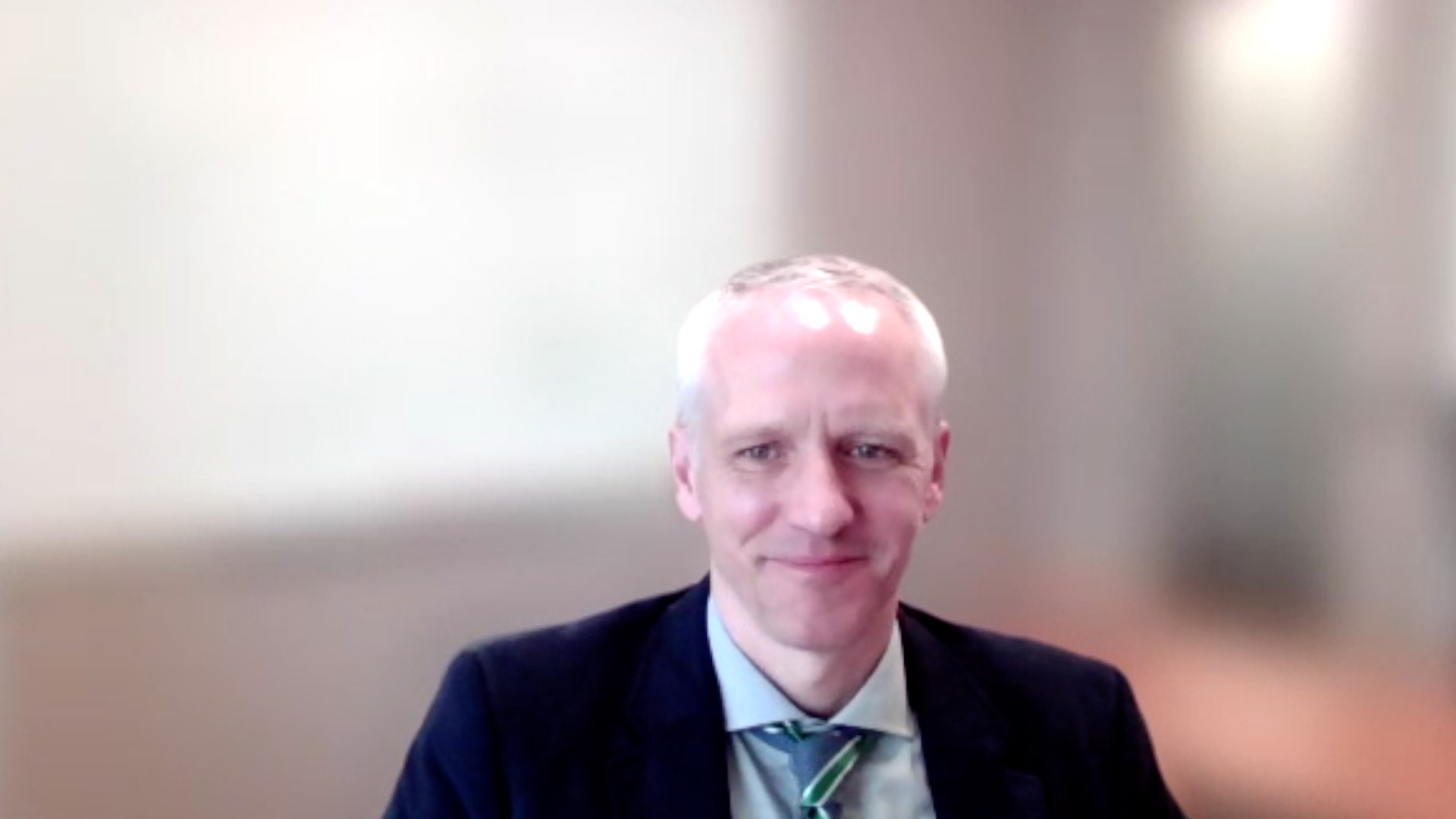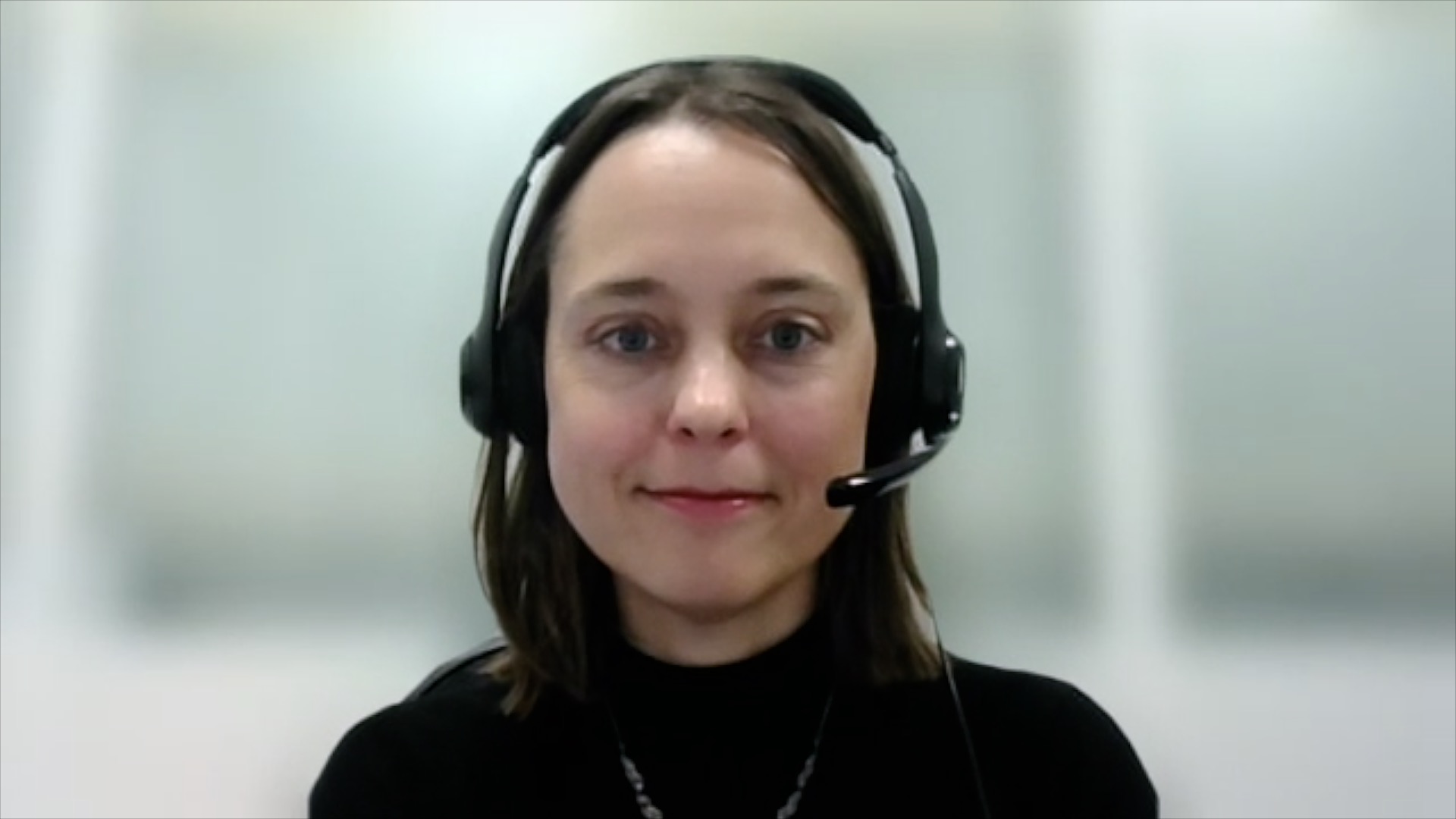Rimas Lukas, ASCO 2023: The INDIGO phase III trial, vorasidenib in patients with IDH1/2 mutated grade 2 glioma
The INDIGO phase III trial assessed the use of vorasidenib in patients with IDH1/2 mutated grade 2 glioma. In this touchONCOLOGY interview, we speak with Dr Rimas Lukas (Malnati Brain Tumor Institute, Northwestern University, Chicago, IL, USA) to discuss the mechanism of action in vorasidenib, the outcomes of the INDIGO trial, and what these findings mean for the field of low grade glioma.
The abstract entitled ‘INDIGO: A global, randomized, double-blinded, phase 3 study of vorasidenib versus placebo in patients with residual or recurrent grade 2 glioma with an IDH1/2 mutation’ was presented at the American Society of Clinical Oncology Annual Meeting, 2–6, June 2023.
Questions:
- What is the mechanism of action of vorasidenib? (0:17)
- What is the rationale for the use of vorasidenib in grade 2 glioma with an IDH1/2 mutation? (0:46)
- What is the purpose of the INDIGO trial, and what is the eligibility criteria? (1:19)
- What is unique about the methodology of the INDIGO trial? (2:02)
- How well were the primary and secondary endpoints achieved? (3:16)
- What will be the likely clinical impact of these findings? (4:10)
Disclosures: Rimas Lukas is on the advisory board for, a consultant for and a speaker’s bureau participant with Merck and Novocure; has received grant/research support from BMS; and has received honoraria from EBSCO, Elsevier and Medlink Neurology.
Support: Interview and filming supported by Touch Medical Media. Interview conducted by Danielle Crosby.
Filmed as a highlight of ASCO 2023
Access more content on Neuro-oncology here
Transcript:
My name is Rimas Lukas. I’m Associate Chief of the Neuro-Oncology division, at the Malnati brain tumor Institute at Northwestern University in Chicago, Illinois.
Q. What is the mechanism of action of vorasidenib?
Vorasidenib is an IDH1/2 inhibitor. IDH is an enzyme that’s part of the krebs cycle that leads, when in normal states to the production of alpha ketoglutarate and in the mutated version of IDH, it ends up leading to the production of something called 2-Hydroxyglutarate which is an oncometabolite that leads to widespread methylation of the genome, as well as another number of other downstream problems that lead to gliomagenesis.
Q. What is the rationale for the use of vorasidenib in grade 2 glioma with an IDH1/2 mutation?
Early phase studies looking at the use of IDH inhibition both with vorasidenib as well as ivosidenib, also known as Tibsovo commercially, led to decreased 2-HG production within tumours when measured in anoperative study. It also led to radiographic improvements in a number of these tumours and then also some changes on correlative studies looking at the genetic profile of these tumours.
Q. What is the purpose of the INDIGO trial, and what is the eligibility criteria?
So the INDIGO phase III trial was designed for patients with grade two or low grade IDH mutated, astrocytomas or oligodendrogliomas. And these are two related tumours that are both driven by IDH mutation. The oligodendroliomas also harbour 1p19q co deletion.
In both of these tumour types, patients had to have residual and/or progressive disease that required intervention but did not require radiation or chemotherapy. So those were the inclusion criteria for this large phase III clinical trial.
Q. What is unique about the methodology of the INDIGO trial?
The INDIGO trial takes a fairly unique patient population that is radiation and chemo naive. It is a population that would have been followed clinically and radiographically at that time period. From my perspective, it was pretty amazing that they were able to collect this patient population and quickly accrue.
With regards to the trial design with respect to endpoints, they utilized progression free survival (PFS) by independent review as the primary endpoint.
And then they used a number of other secondary endpoints, including time to next intervention. Now these are not traditional endpoints used in high grade glioma trials. So in high grade glioma, just like in many other oncologic entities, we end up looking at the overall survival (OS) as our primary endpoint. In these low grade gliomas because the OS is so long, it would take an eternal amount of time to reach that endpoint and so we need to have some sort of proxy endpoint. So PFS was used for that. In the past, we have pretty clear precedent that there is an association between overall survival and progression free survival in effective therapies in this specific disease. And so hopefully, we can extrapolate and say the same thing here as well.
Q. How well were the primary and secondary endpoints achieved?
With respect to the primary endpoint of PFS by independent radiologic review, that hazard ratio is 0.39. So this is something that was pretty clear that the curves were separating and it is not a scenario where it just sort of barely made the mark. The time to next intervention had an even more superior hazard ratio of 0.26 in favour of the investigational arms. That means that it took a long time for patients to have to have another intervention whether that be surgery, radiation, chemotherapy, etcetera. And that from my point of view is a very clinically meaningful endpoint because it is a young patient population. So if we are able to delay treatments like radiation, which are associated with long term toxicities or chemotherapy associated with increased risk of sterility, etcetera, I think that it is a substantial gain.
Q. What will be the likely clinical impact of these findings?
I suspect that with regards to how favourable the outcomes were, the trial clearly meeting the PFS primary endpoint, clearly meeting the time to next intervention endpoint and a number of other clinically relevant endpoints currently undergoing analysis; seizure frequency, volumetric decrease in tumour size, which I suspect will also be positive.
My suspicion is that regulatory bodies will approve this as a therapeutic, presumably for the patient population as described in the clinical trial. It is possible that this drug would be utilized more broadly in patients who have higher grade non-enhancing tumours that are driven by IDH mutation in patients who have previously received the standard radiation and chemotherapy and now looking for another line of treatment, and this could be a viable one.
I think what will be interesting over the next handful of years is how we explore the concept of IDH inhibition further in these other tumour types that are related, as well as in combination therapies, either combination therapy with our traditional RT in chemo or combination therapy with more novel approaches such as IO (immuno-oncology) approaches.
There is an on-going clinical trial looking at recurrent grade 3 astrocytomas with the canonical IDH mutation, combining the IDH inhibitor with a PD-1 antibody. So that will be interesting to see what the readout is on that over time.
I think it is very exciting times in the field of glioma research, particularly in low grade glioma research.
I do not think many would have anticipated a handful of years ago that we would have such tremendous success with a targeted approach because history has not demonstrated that previously. So I think that hopefully this is a sea change that we observe and will keep us busy over the next handful of years in optimizing patient care.
Subtitles and transcript are auto generated







